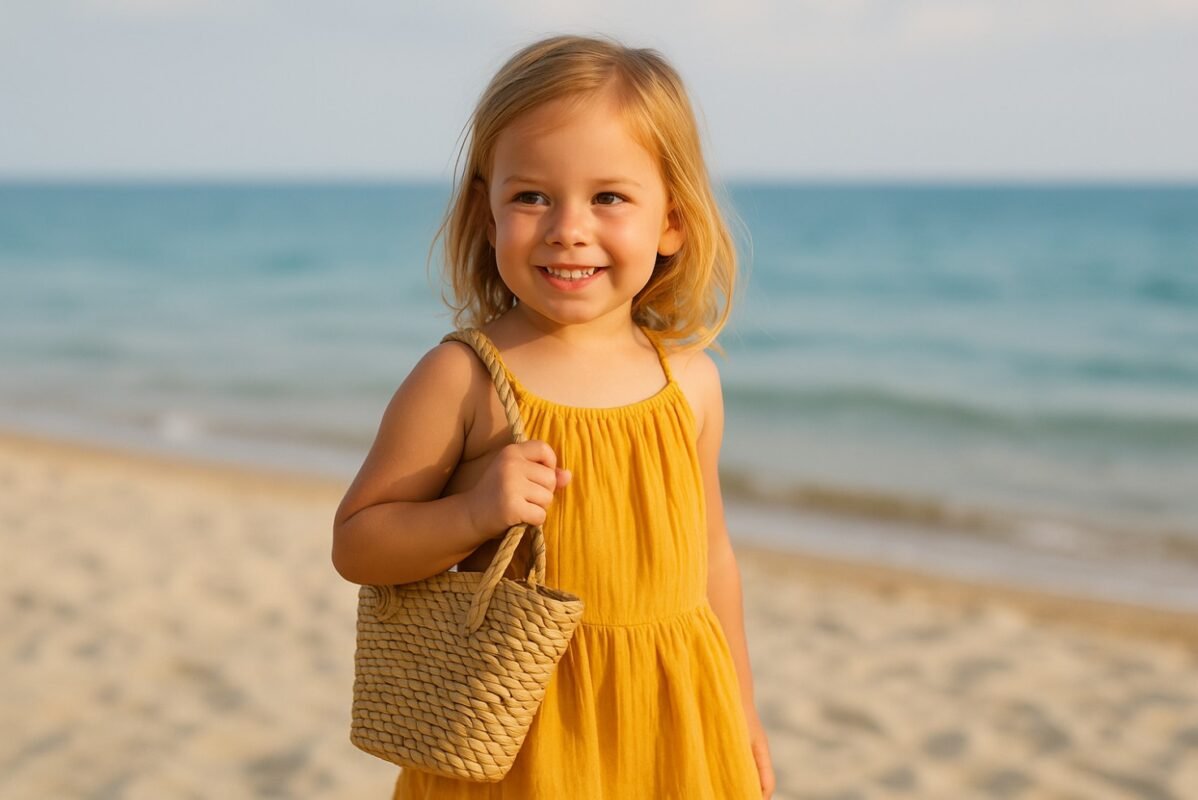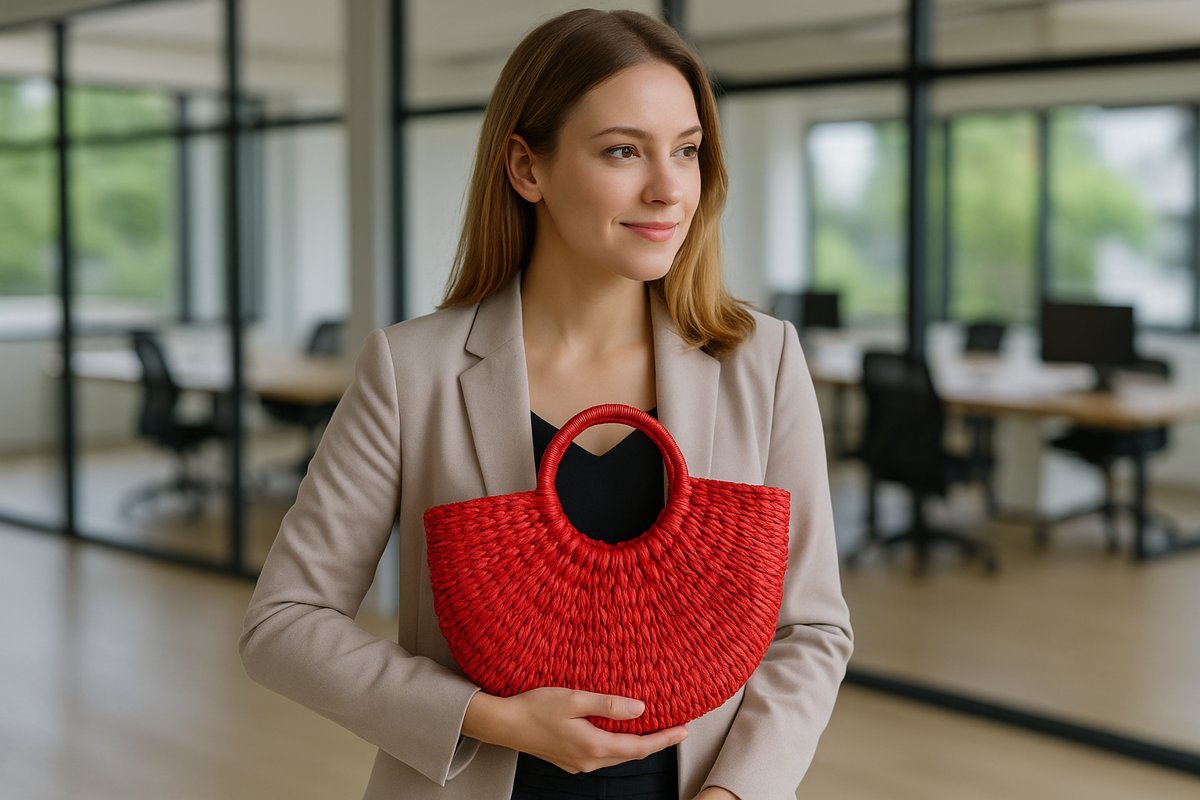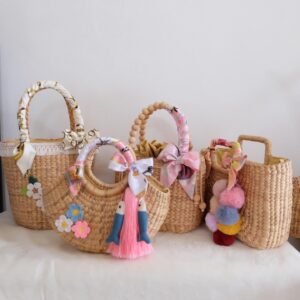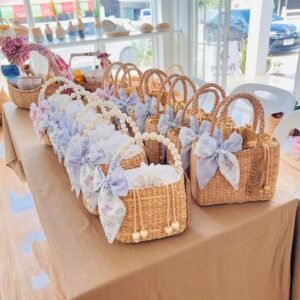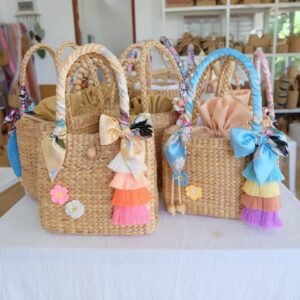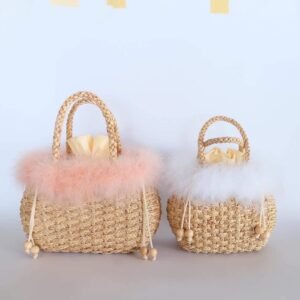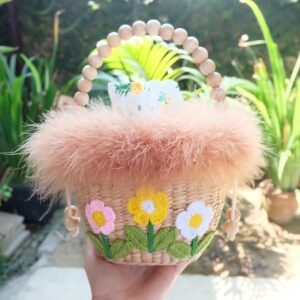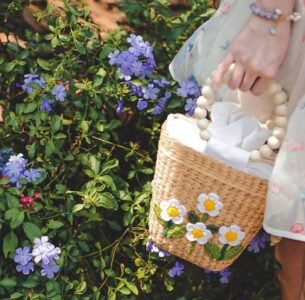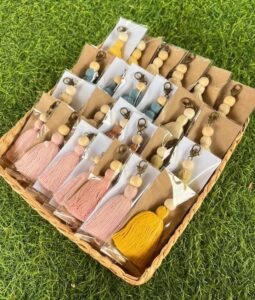Your Guide to Stylish and Sustainable Straw, Wicker, Raffia, and Woven Bags
Are Straw, Wicker, Raffia, and Woven Bags Good for Everyday Use?
Straw, wicker, raffia, and woven bags have evolved beyond seasonal accessories. They’re now practical, fashionable everyday choices embraced by people of all ages.
Their rare blend of style, lightness, and functionality makes them ideal for daily use. A straw tote, for instance, is perfect for shopping trips, market runs, or carrying your work essentials. A compact woven crossbody keeps your hands free while adding a boho-luxe edge to your outfit. Natural fibres offer breathability and comfort, unlike synthetic materials that can feel heavy or rigid. A lightweight raffia or wicker handbag won’t weigh you down and often feels more relaxed and organic than traditional leather designs.
Modern straw bags also feature thoughtful design updates such as zippered pockets, reinforced handles, canvas linings, and hidden compartments. These practical elements make them just as functional as their contemporary counterparts.
Furthermore, these bags align with sustainable fashion goals. Their natural, biodegradable composition means you’re choosing a planet-friendly alternative to plastic-heavy fashion.
How Can You Tell If a Straw Bag is Handmade?
Handmade straw bags are woven with care, patience, and a distinctive personal touch that mass-produced pieces can’t replicate.
Look closely at the weave: is it perfectly uniform? Machine-made bags tend to have consistency, while handmade ones may show slight variances in texture or spacing. These imperfections are not flaws—they’re the fingerprints of skilled artisans.
Often, handmade bags are crafted in small batches. Ethical labels will proudly share information about the community or individual who made your item. It’s common to find tags or cards featuring the artisan’s name or a story about their craft.
Materials are another telltale sign. Handmade pieces use high-quality, natural fibres sourced from sustainable local environments, whereas machine-made options may blend in synthetic elements to cut costs.
Artisan bags are typically more robust and longer-lasting. The weave is tighter, the edges are finished more cleanly, and the handles are stitched with stronger thread or wrapped for comfort.
How Long Do Straw and Raffia Bags Last?
Straw and raffia bags can last years when crafted well and maintained properly. While some assume these bags are too delicate for long-term use, they’re surprisingly resilient—especially when reinforced by traditional handweaving techniques.
Durability depends greatly on the quality of the weave and the fibre used. Water hyacinth, for example, is a tough, renewable material commonly used in Thai artisan bags. Raffia, sourced from palm leaves, is both flexible and strong.
A well-made straw bag used for regular daily activities—like carrying your phone, keys, wallet, and reusable water bottle—can last five to seven years. Bags used only occasionally can endure even longer.
The longevity of your bag also hinges on your care routine. Please protect it from rain, avoid overloading it with heavy objects, and give it time to rest by rotating it with other bags.
Routine maintenance, like cleaning dust with a soft brush, reshaping it after use, and storing it away from direct sunlight, will extend its lifespan considerably.
Are These Bags Still in Style?
Natural fibre bags are among the most enduring accessories in modern fashion. They feature prominently in spring/summer collections from leading designers and sustainable brands each year.
Their appeal lies in their timelessness and versatility. They blend easily with casual denim, flowy linen dresses, or tailored summer suits. Whether you’re off to a beach holiday, garden party, or city café, these bags always feel appropriate.
Influencers and celebrities continue spotlighting them across social media, making them a staple in seasonal wardrobes. Iconic fashion houses have even released premium versions crafted by heritage artisans, confirming their luxury potential.
What keeps them relevant is their adaptability. Using traditional weaving techniques, designers now create structured work-friendly satchels, oversized beach bags, evening clutches, and colourful patterned pieces.
Eco-fashion movements have also boosted their popularity, with many consumers opting for biodegradable and cruelty-free alternatives to leather or vinyl.
Can You Use Straw, Raffia, or Wicker Bags in Wet Weather?
These bags are made from natural, absorbent materials and are not intended for wet conditions. Water can cause the fibres to swell, weaken, or become discoloured.
A drizzle won’t ruin a well-made straw bag—especially if treated with a natural fibre protector spray. These treatments add a thin, water-resistant coating, helping your bag shed light moisture.
If your bag gets wet, gently blot the moisture with a clean, dry cloth. Then, let it air dry completely in a cool, well-ventilated area. Avoid placing it in direct sun or near a heat source, which can dry the fibres too quickly and cause them to become brittle.
Consider keeping your straw bag in your main rotation during the dry months for damp climates. Alternatively, store it in a breathable dust bag when not in use to protect it from humidity.
How Do You Repair or Restore a Woven Bag?
Natural fibre bags, like those made from straw, raffia, or wicker, are durable but wear and tear is inevitable with regular use. The good news is that these bags are usually easily repaired at home or by a local craftsperson.
Small frays or splits can often be treated with fabric glue or clear drying adhesive. If a section of the weave has come loose, gently rethreading it with a crochet hook can make it as good as new.
Handles are a common failure point, especially if they’re not reinforced. A replacement handle can often be sewn using heavy-duty thread or wrapped with matching fibre. If you’re not confident, look for a shoe or bag repair shop with experience in natural materials.
Stains can be tricky. Use a mild mix of soap and water—dabbed, never rubbed—and blot dry. Cornstarch can sometimes absorb the worst of it for tougher marks, like oil or makeup, before cleaning. Always air dry your bag thoroughly after cleaning to avoid mould or warping.
Some artisans offer restoration services if your bag has sentimental value or is particularly delicate. They can replace weave sections, re-dye faded fibres, or reattach embellishments while preserving the bag’s character and structure.
Where Can You Buy Authentic Handmade Straw Bags Online?
Finding authentic handmade straw bags online is easier than ever—but knowing where to shop ensures you’re buying from genuine artisans, not factories.
Etsy remains one of the most popular platforms, connecting shoppers with craftspeople worldwide. Look for makers with high ratings, detailed photos, and background stories on their process.
The Straw Bag Company offers a curated collection of water hyacinth bags handcrafted by Thai artisans. Each purchase directly supports fair wages, traditional techniques, and local sustainability efforts.
Boutiques like Made Trade, Accompany, and Ten Thousand Villages showcase artisan-made bags worldwide. They highlight sustainability credentials, including natural materials and ethical labour practices.
Social media has also become a direct-to-buyer market. Many weavers now sell through Instagram or Facebook, giving buyers a more personal experience and real-time access to limited collections.
Finally, check the websites of fair-trade organisations. These brands focus on traceability, transparency, and empowering local communities—ensuring your purchase has a meaningful impact.
How to Prevent Mould, Mildew, and Pests From Attacking My Straw Bag
Natural materials are beautiful but vulnerable. Mould, mildew, and pests can quickly damage your straw bag if stored improperly—especially in humid climates.
After each use, inspect your bag for signs of moisture, dirt, or food crumbs. These create the perfect breeding ground for bacteria and bugs. Use a soft cloth or brush to clean it out gently.
Always store your bag in a dry, ventilated space. Avoid plastic bags or sealed containers, which trap humidity. Instead, opt for a breathable fabric cover or hang it on a hook in a cool wardrobe.
Slip a small silica gel, cedar, or lavender sachet inside the bag for extra protection. These natural moisture absorbers also act as deterrents for insects like moths or beetles.
Rotate your bags frequently if you live in a tropical or damp area. Leaving one untouched in a humid space for weeks invites problems. Occasional use and exposure to fresh air can help preserve it.
Use a 1:1 white vinegar and water solution in case of early mould spots. Lightly dab the area and let it dry thoroughly. This should kill the spores without damaging the weave.
Straw Bag Proper Storage and Maintenance Tips
Looking after your bag properly means it will last longer and keep its original shape and charm. Natural fibres need to breathe—so treat them with care, just as you would with fine clothing or leather goods.
Never cram your straw bag into a drawer or suitcase. The structure can warp or collapse. Instead, store it upright on a shelf or stuffed gently with clean paper or fabric to help it maintain its shape.
Avoid overloading the bag when in use. While strong, straw and raffia are not made for heavy loads like laptops or groceries. Stick to essentials like your phone, wallet, sunglasses, and keys.
During off-seasons, wrap the bag in a cotton pillowcase or dust bag. Keep it out of direct sunlight, which can bleach natural dyes and dry out the fibres, causing brittleness over time.
Give your bag a quick clean every few weeks. Shake out dust and debris, and brush down the exterior gently. If it gets stained, blot (don’t rub) and allow it to air out completely.
With these habits, your straw bag won’t last longer—it’ll continue to look fresh and elegant each time you bring it out.
Our Final Thoughts
Straw, wicker, raffia, and woven bags are more than accessories—they’re wearable art rooted in centuries-old traditions. They combine fashion, function, and values in one stunning package.
In today’s world of fast fashion and environmental awareness, choosing a handcrafted straw bag is a stylish statement and an act of conscious consumerism. Each bag represents hours of skilled work and supports artisan livelihoods around the globe.
From weekend markets to weddings, city strolls to seaside escapes, these bags transition effortlessly between settings. Their charm lies in their simplicity, story, and ability to carry nature and tradition’s essence.
Whether investing in your first straw tote or adding a limited-edition raffia clutch to your collection, you’re becoming part of a slow fashion movement that celebrates quality over quantity and beauty with a purpose.



